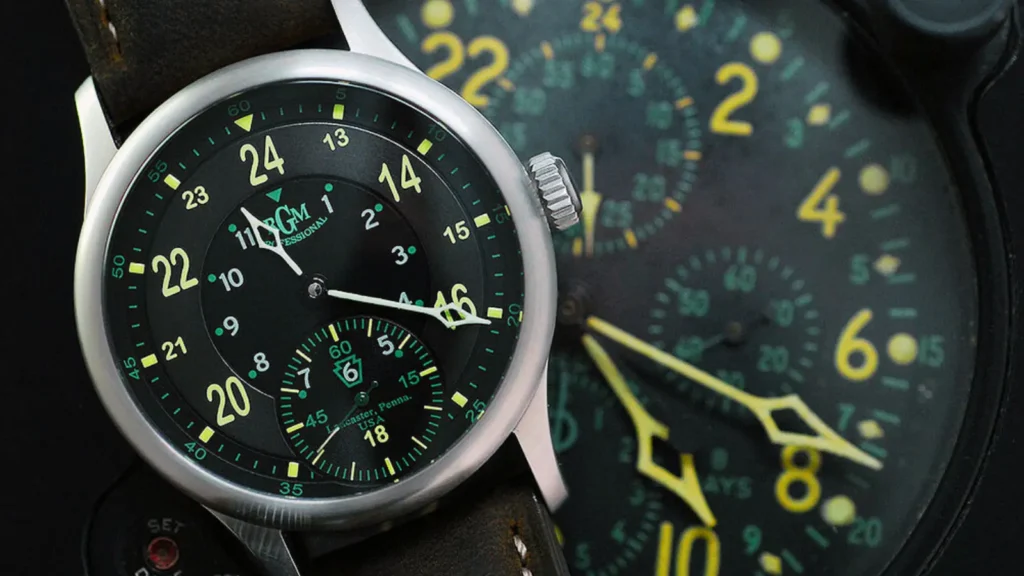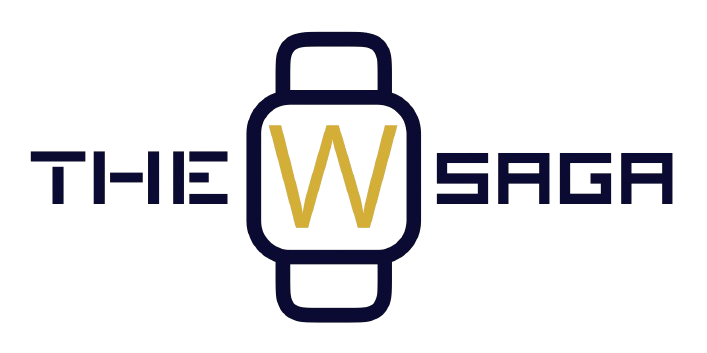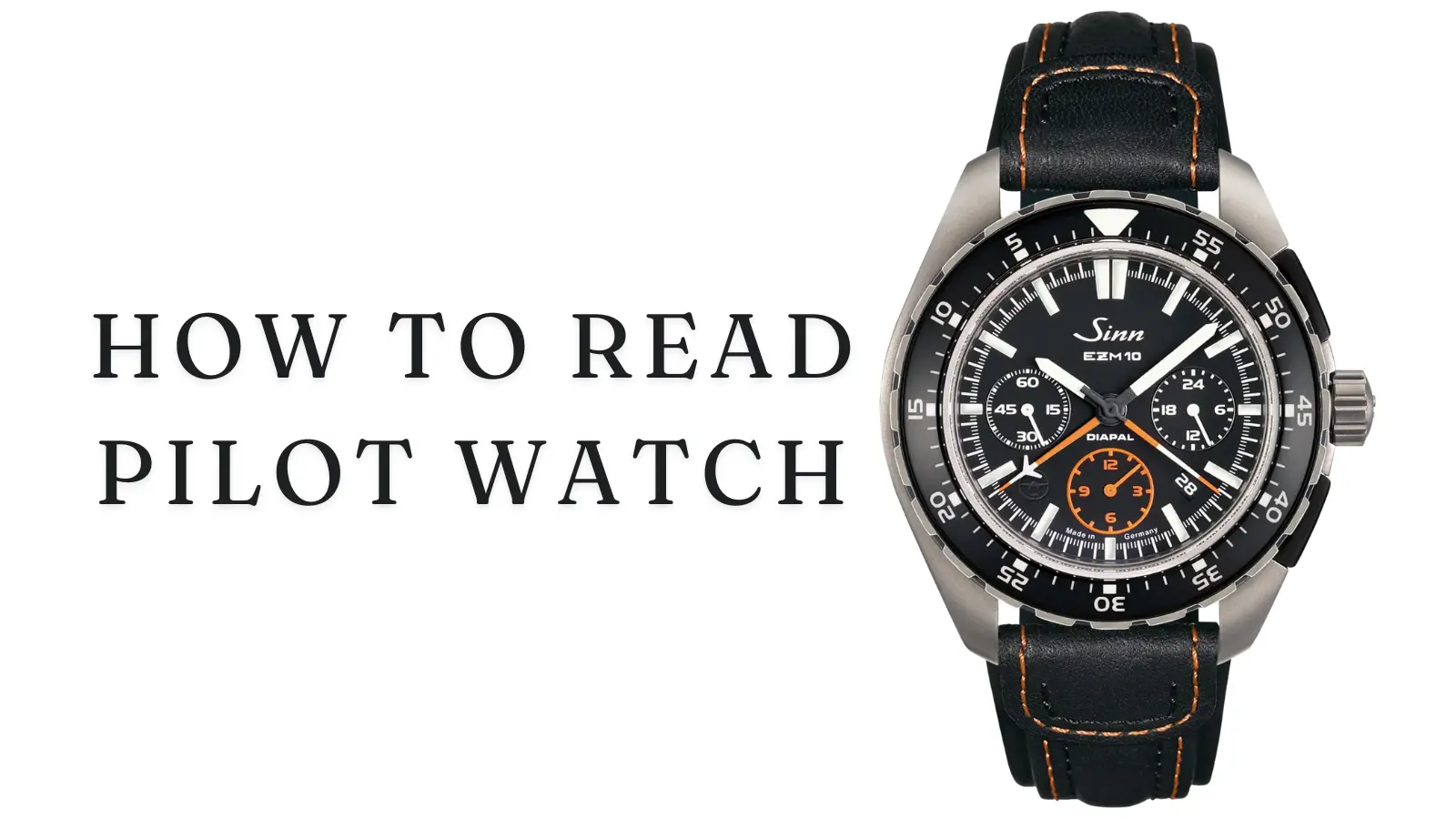Table of Contents
Pilot watches, also called aviator watches, are perhaps one of the most iconic and functional timepieces. Initially, they were a watchmaking domain entirely dedicated to pilots adventuring the blue skies. However, they have significantly elicited watch enthusiasts and collectors’ interest in possessing such timepieces. Now, what is a pilot watch, and how do you read it? This article discusses the history, features, and functionality of pilot watches.
What is a Pilot Watch?
A pilot watch, or aviator watch, is a wristwatch originally designed for pilots, featuring key characteristics such as large, easy-to-read dials with luminous hands, oversized crowns for adjustment while wearing gloves, and durable construction to withstand various flight conditions. Often equipped with features like GMT for tracking multiple time zones, chronographs for measuring intervals, and slide rule bezels for in-flight calculations, these watches are built for practicality and precision. Known for their bold design and functionality, pilot watches have become popular beyond aviation, with brands like Breitling, IWC, and Rolex creating iconic models.
Origins of Pilot Watches
The first pilot watches were developed in the early 20th century, when aviation was in its infancy. Pilots needed a reliable and easily readable watch that could be used in the cockpit under various conditions. In 1904, Louis Cartier created one of the earliest known pilot watches, the Cartier Santos, for Brazilian aviator Alberto Santos-Dumont. The watch allowed Dumont to keep both hands on the controls while checking the time.
During World War II, pilot watches became even more crucial, with various air forces around the world issuing specialized timepieces to their pilots. These watches featured large, clear dials, luminous hands, markers for easy reading in low-light conditions, and robust construction to withstand the rigors of combat.
Key Features of a Pilot Watch
Pilot watches are designed with specific features that cater to the needs of aviators. Here are some of the most common characteristics:-
Large, Easy-to-Read Dials
A big dial is one of the essential joints of a pilot watch. The big dial is used to read the time fast and easily, even if the weather conditions are not favorable. Big and bold numbers are displayed on them, and in most cases, they come in Arabic figures. Accordingly, in a combination of big dial and Arabic numbers, the time can be read from a long distance without any difficulty.
Luminous Hands and Markers
Pilots may fly for several hours, and in order to avoid any difficulties with reading the time, this feature becomes very important. It can also be understood from the explanations provided that there exists a persisting relationship between dials and numbers displayed on pilot watches. Just in the same way that significant figures define a watch, the dial of the watch also defines the numbers that will be displayed on it.
Last but not least, the luminosity given to the watch hands is another integral part of pilot watches since pilots generally fly in low-light and night conditions. Luminous hands can be found commonly in pilot watches produced. The reason is very simple. In pitch-dark weather or low-light conditions, the watch with its luminosity can become readable.
Oversized Crown
Normally, every pilot watch has an oversized crown to help pilots adjust the time while wearing gloves. Initially, when aviation was still new, open cockpits were used, and therefore, pilots were exposed to harsh weather conditions when flying. This forced them to wear clothes that were heavy due to the inclusion of gloves. They would sometimes need to adjust their watches, but if the crown was not oversized, they could find it difficult to adjust it with their gloves on. Therefore, with that particular experience of the pilots of yesteryears, a military pilot does not need to take off his gloves before he can set his wristwatch to the correct time.
Anti-Reflective Coating
Another function is an anti-reflective coating. This coating is put on the watch’s crystal, the top part that covers the watch. Especially for the pilots, such a coating is very important due to its function of reducing the intensity of glaring sun reflection. With that function, even during the day, a person can still read the correct time from his watch without being distracted by sun reflection.
Chronograph Functions
Many pilot watches include a chronograph function, which allows the pilot to measure elapsed time. This feature is useful for timing various aspects of flight, such as fuel consumption, flight duration, or navigation calculations.
GMT and World Time Complications
In addition to the elapsed time function, the pilot watches the GMT, which is also called the Greenwich Mean Time function. In this way, the pilot can easily monitor two time zones on their journey bucks or international travel.
Also Check: What is a GMT Watch?
How to Read a Pilot Watch

Reading a pilot watch might seem straightforward at first glance, but understanding the additional features can enhance its functionality. Here’s a step-by-step guide on how to read and use a pilot watch:
Telling the Time
The primary function of any watch is to tell the time. The large, clear dial of a pilot watch makes this easy. Simply read the hour and minute hands as you would on any other analog watch. The bold numerals and luminous hands ensure visibility in any condition.
Using the Chronograph
If your pilot watch has a chronograph function, you can use it to measure elapsed time. Typically, the chronograph is activated by pressing the top pusher, which starts the stopwatch. Pressing the same pusher again stops the time, and a second pusher (usually at the bottom) resets the chronograph.
The chronograph dials (often called sub-dials) on the watch face will show elapsed seconds, minutes, and sometimes hours. This is useful for timing specific events or intervals during flight.
Reading the GMT or World Time Feature
For a GMT function, there will be an additional hand on a pilot watch time in another time zone to perform the city to the world. This hand, which would usually be a 24-hour hand, will begin to point to a number on the working pouter bezel or a secondary scale, which will also be marked in 24-hour increments on the watch itself, indicating the time that specified city may be the major representative. Watches that offer the world time will include the names of some cities on their dial. You can easily tell what time it is in another place, in each hand at an angle with the name of the city.
Using the Slide Rule Bezel
Some pilot watches are made with a GMT function, and some are even made with world-time complications. This is meant for international travelers—and especially the pilots who cross multiple time zones. In international flights, the time difference is very critical. To get good service in a railway station or an airport when you have an international timetable or flight schedule, you will need a lot of professionalism. You will also need to be very time-conscious to realize that you successfully landed in a new country, which has a different time from where you came from. This international time will determine the take-off schedule for your back travel. So, this one is a must-have.
Why Choose a Pilot Watch?
A pilot watch will not only be beneficial to pilots. It has a unique look and feel for everyone who tries it. It combines a powerful look with unique features that impress many. The sleek design of the newest pilot watches is very appealing. Several manufacturers now, including Ciga Design, are making pilot watches that are of very high caliber. Their make will impress any watch lover. Therefore, if you need a watch to complement your legant, the pilot watch will be a good choice. If you are an upcoming pilot, you will also need some good pilot watches. The design and feel will keep you in the best occupations ever. The design recalls the history while the technology makes the models develop drastically.
Also Check: What are Driving Watches?
Conclusion
Pilot watches are not mere timepieces; they are a tribute to the chronicles of aviation history and history progress throughout the years. Airborne timekeepers, with their large dials, luminous hands, and distinct features, have been developed to be functional and accurate in the most extreme conditions. Being able to employ and read a pilot watch properly will help you appreciate your airborne tool even more, whether you are putting it to its designated use or wearing it as a stylish thing. Hence, wherever you are, take to the skies or keep your feet on the ground. What is a pilot watch?—it is a hallmark of adventure, accuracy, and timeless sophistication.

